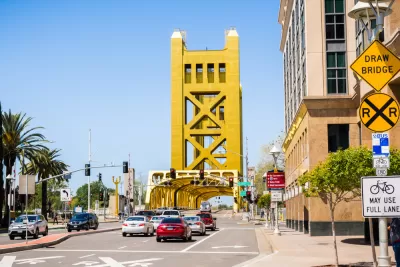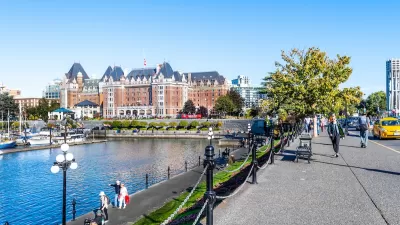The metropolitan areas with a lot of planning jobs, the highest paying planning jobs, and a growing number of planning jobs.

Richard Florida shares analysis of the geographical trends in work for urban planners. Florida chose the professional field of urban planning as an indicator species for a broader question about where "urbanists" work, but the distinction places the article's subject right in Planetizen's wheelhouse.
Florida's team of researchers collected occupational data for urban planners in the 100 largest metro area and "arrayed" the data across a few indicators: "metros with the highest concentrations of urban planners; metros where urban planners make the highest salaries; and metros where urban planning jobs have seen the most growth." The article also includes maps of the findings.
Florida's discoveries about urban planning work have less to do with the most urban environments in the country as one might assume. There's only a few places in the country that have an above average number of planners, and most places are working with far less than the average number of planners. Places with the most planners above average include Sacramento, San Francisco, and Honolulu.
The article finds similar geographic breakdowns in terms of planner pay scales and where planners are being hired. To sum, Florida says urban planning jobs are more spread out than one might assume:
If you’re an urban planner, or hope to pursue a career in planning, you can find high concentrations of planning jobs in state capitals like Sacramento and Austin, as well as in the nation’s capital. Well-paying jobs are in established tech hubs—the Bay Area, D.C., and Boston—but also in the lower-cost metros of Knoxville, Las Vegas, and Des Moines. And the fastest job growth is in less obvious, smaller cities in the South and West, such as Stockton and Fresno, California; McAllen and El Paso, Texas; and Sarasota, Cape Coral, and Lakeland, Florida.
FULL STORY: America's Hottest Cities for Urban Planners

Planetizen Federal Action Tracker
A weekly monitor of how Trump’s orders and actions are impacting planners and planning in America.

Maui's Vacation Rental Debate Turns Ugly
Verbal attacks, misinformation campaigns and fistfights plague a high-stakes debate to convert thousands of vacation rentals into long-term housing.

San Francisco Suspends Traffic Calming Amidst Record Deaths
Citing “a challenging fiscal landscape,” the city will cease the program on the heels of 42 traffic deaths, including 24 pedestrians.

Defunct Pittsburgh Power Plant to Become Residential Tower
A decommissioned steam heat plant will be redeveloped into almost 100 affordable housing units.

Trump Prompts Restructuring of Transportation Research Board in “Unprecedented Overreach”
The TRB has eliminated more than half of its committees including those focused on climate, equity, and cities.

Amtrak Rolls Out New Orleans to Alabama “Mardi Gras” Train
The new service will operate morning and evening departures between Mobile and New Orleans.
Urban Design for Planners 1: Software Tools
This six-course series explores essential urban design concepts using open source software and equips planners with the tools they need to participate fully in the urban design process.
Planning for Universal Design
Learn the tools for implementing Universal Design in planning regulations.
Heyer Gruel & Associates PA
JM Goldson LLC
Custer County Colorado
City of Camden Redevelopment Agency
City of Astoria
Transportation Research & Education Center (TREC) at Portland State University
Jefferson Parish Government
Camden Redevelopment Agency
City of Claremont





























